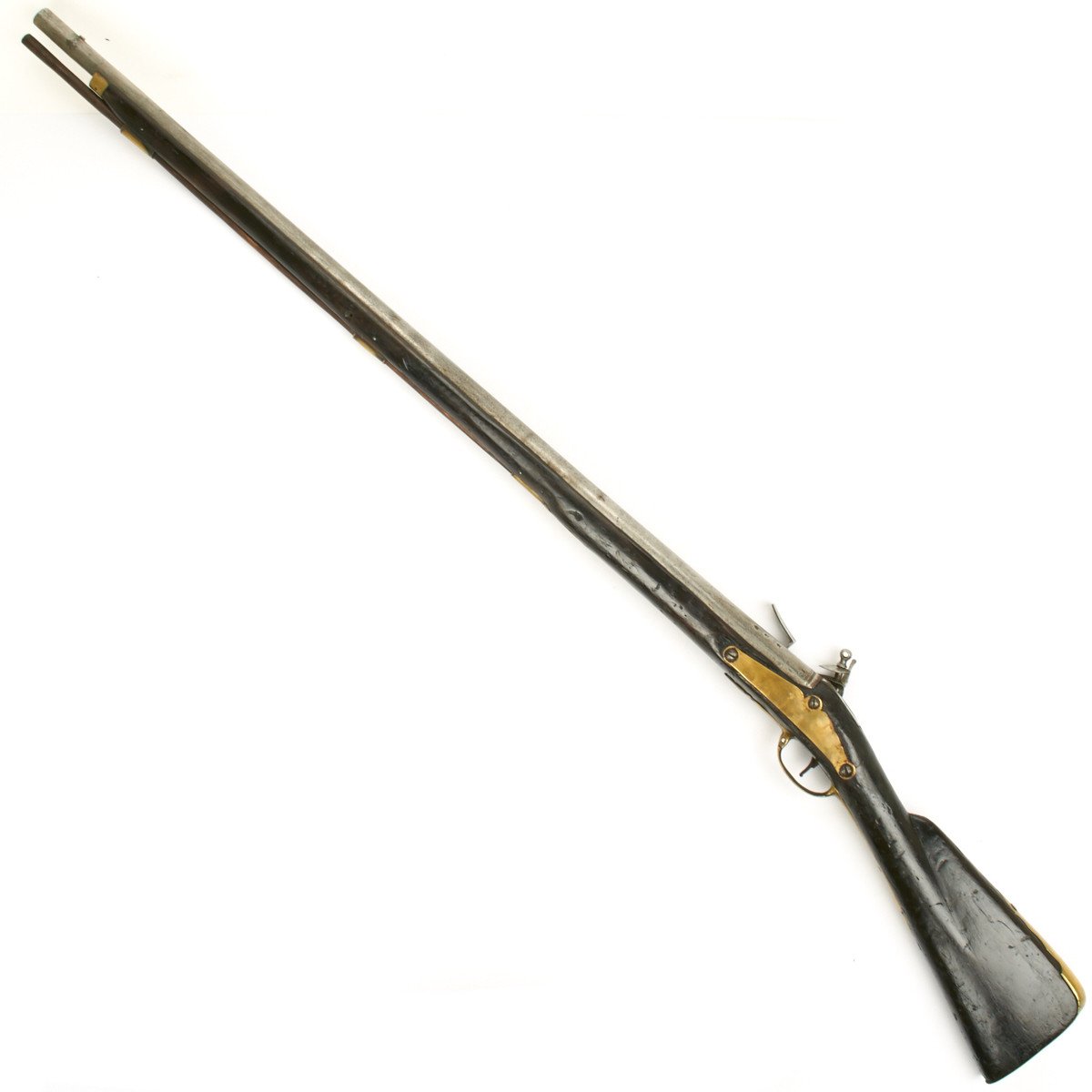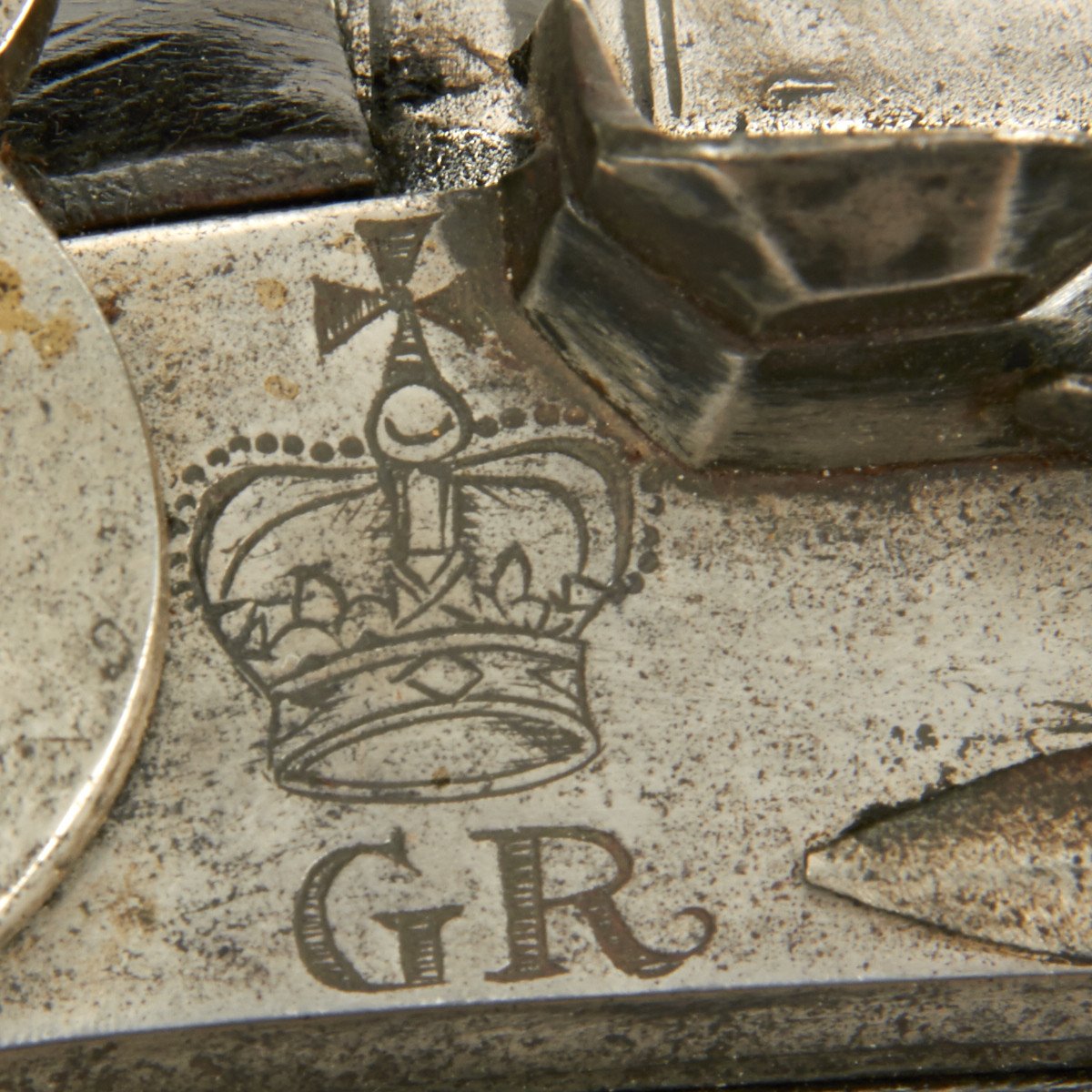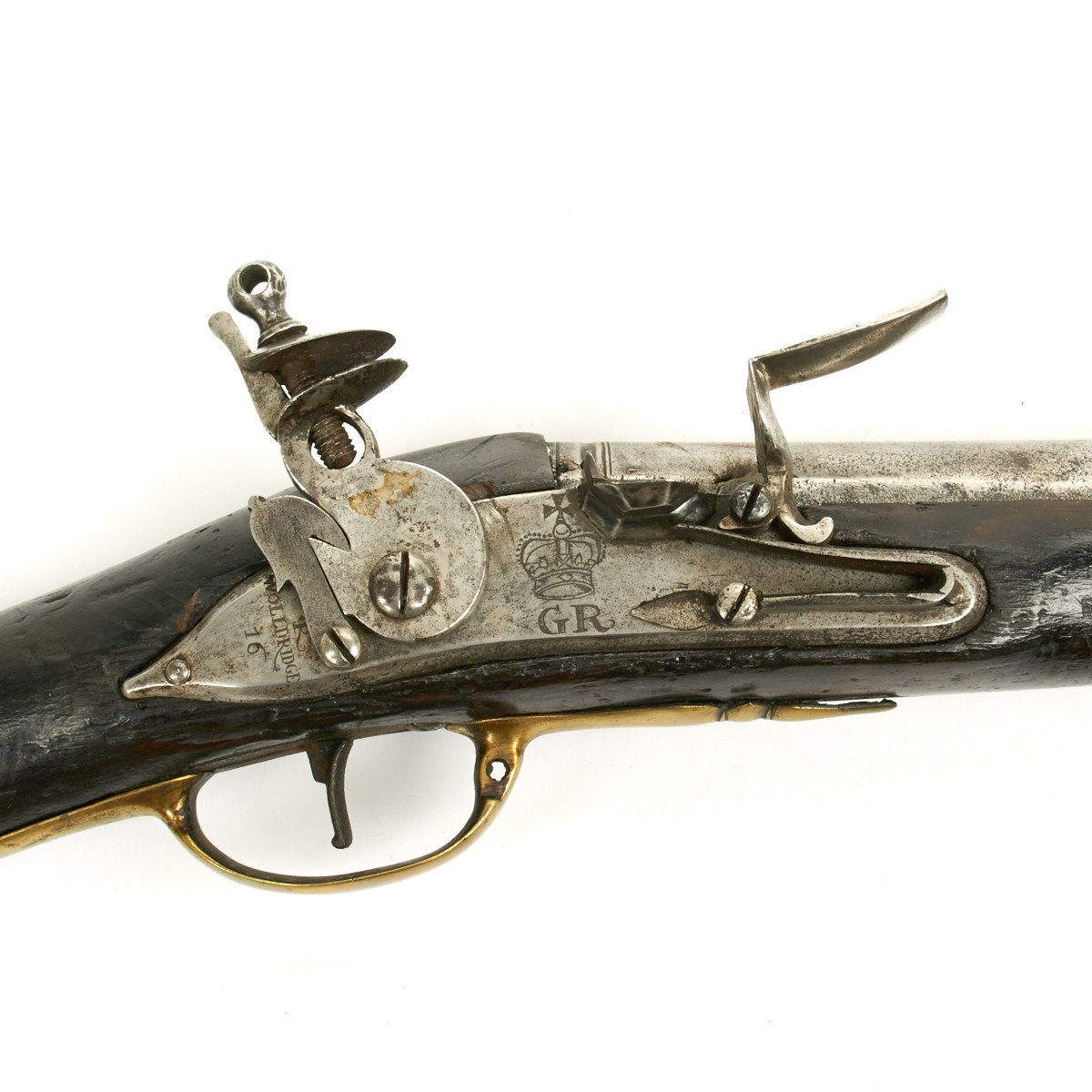Original British King George 1st Doglock Colonel’s Musket- Dated 1716 Original Items
$ 22.995,00 $ 5.748,75
Original Item: Only One Available. This is one of the rarest items we’ve had in a great while. This .75 bore musket made by the renowned gunmaker, ‘R. WOLLDRIDGE’ (as marked on tail of the lockplate) falls into the pre Brown Bess category of a ‘Colonel’s Musket’.
Prior to the adoption of what we now call the Brown Bess in 1730 most Regiments were outfitted at their Colonel’s expense. This was a massive undertaking as everything was provided from uniforms, accouterments, field gear and even the infantry Muskets. Officer’s funded their own equipment, and at that time almost any well-heeled gentleman could raise a Regiment for King and Country as long as he footed all the bills!
This musket, dated 1716 bears the Royal monogram of ‘G.R.’ over Crown on lock plate and has early proof marks to on the original length 42 inch barrel. The furniture is all brass and the trigger guard in particular is clearly the pattern the Model 1730 Brown Bess’s was modeled after.
The Dog Lock has three side nails and the brass triangular side plate is a style much used up to some 20 years earlier; 1695-1705. There are three ramrod pipes including the throat pipe, the Ramrod is wooden.
The very heavy brass buttplate has a massive tang extending about half way forward on the bannister rail of the butt stock. The Barrel tang is secured by an inverted bolt whose head is just in front of the trigger on the underside.
This musket although dated for 1716 is full of very early features with much Continental influence as it should be remembered that England had a Dutch King in William III, 1688-1702, who married the British Princess, later Queen Mary of the House of Stuart. Their daughter became Queen Anne who reigned from 1702-1714, she in turn was succeeded by King George I who in fact was German and came from Hanover.
Masses more information can be found about such pre Brown Bess Muskets in the wonderful book- ‘MUSKETS OF THE REVOLUTION’ by Bill Ahern, Pages 13-23 and the scholarly work ‘SMALLARMS OF THE BRITISH FORCES IN AMERICA 1664-1815’ by De Witt Bailey Ph.D., Pages 24-29, both make truly great reading!
This musket itself has an interesting history: Until 1963 this resided in the ‘armory’ at Leith Hall in Scotland, said to be the most haunted house in Great Britain. The Leith family can be traced back almost to medieval times and apparently were very supportive of Bonnie Price Charlie’s Rebels and sheltered several after the Battle of Culloden in 1746. Many of the weapons in the armory were claimed to have been used in the ’45 Uprising’ and at that final Battle on April 16th.1746.
In 1963 the last remaining family member died but before hand she had had all the weapons removed by the family attorneys for safekeeping and upon her death willed the estate (without, in her view, those unwelcome arms) to the National Trust who have maintained the Leith Hall for public viewing until around 2006 when it was finally closed due to government cutbacks.
After Lady Leith’s demise the Attorneys sold the weapons and a quantity of the old family documents to an English Dealer named Herbert Sutcliffe who in turn sold several pieces to a collector named George Strakaty of Vienna, Austria. Stakaty was a born Czech and actually was in the modern arms trade and worked for the Czech Government Arms Company of Omnipol in Prague. Strakaty’s role was as an International salesman taking him all over the third world. However, Strakaty was a total Anglophile and every time he visited London would buy only British antique weapons.
Christian first met George Strakaty, at Omnipol, in 1971 and over the years they became close friends he leading Christian to many Government arms stashes he had discovered. As time passed George?s collection became quite extensive. In the late 1980s Strakaty, by then well past his prime, retired to Las Palmas in the Canary Islands together with his wife Ruth. Before doing so however he announced to Christian that he wanted him to buy the entire collection, it was a major undertaking and it took almost five years to pay off the debt.
Only in the last three or four years, now that, as Christian puts it “is truly on the home stretch himself”, has he reluctantly been letting go of some of the Strakaty collection.
Fast Shipping with Professional Packaging
Thanks to our longstanding association with UPS FedEx DHL, and other major international carriers, we are able to provide a range of shipping options. Our warehouse staff is expertly trained and will wrap your products according to our exact and precise specifications. Prior to shipping, your goods will be thoroughly examined and securely secured. We ship to thousands clients each day across multiple countries. This shows how we're dedicated to be the largest retailer on the internet. Warehouses and distribution centres can be located throughout Europe as well as the USA.
Note: Orders with more than one item will be assigned a processing date depending on the item.
Before shipping before shipping, we'll conduct a thorough inspection of the items you have ordered. Today, the majority of orders will be delivered within 48 hours. The delivery time will be between 3-7 days.
Returns
The stock is dynamic and we cannot completely manage it because multiple stakeholders are involved, including our factory and warehouse. So the actual stock may alter at any time. It's possible that you may not receive your order once the order has been made.
Our policy is valid for a period of 30 days. If you don't receive the product within 30 days, we are not able to issue a refund or an exchange.
You can only return an item if it is unused and in the same state as the day you received it. You must have the item in its original packaging.
Related products
Uncategorized
Armoured Fighting Vehicles of the World: AFVs of World War One (Hardcover Book) New Made Items
Uncategorized
Uncategorized
Uncategorized
Uncategorized
Uncategorized
Uncategorized
Uncategorized
Uncategorized
Uncategorized
Uncategorized
Uncategorized
Uncategorized
Uncategorized
Angolan Rebel 1970s era 60mm Inert Display Mortar from Angolan Civil War Original Items
Uncategorized
Armored Burgonet Helmet & Polearm from Scottish Castle Leith Hall Circa 1700 Original Items
Uncategorized
Uncategorized












































































